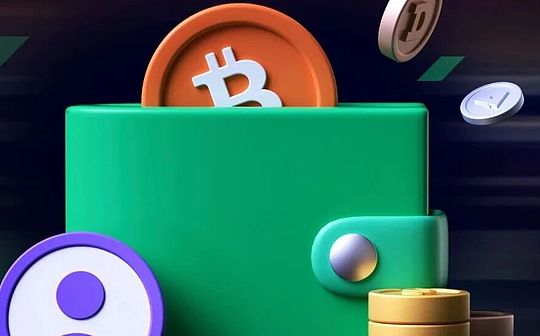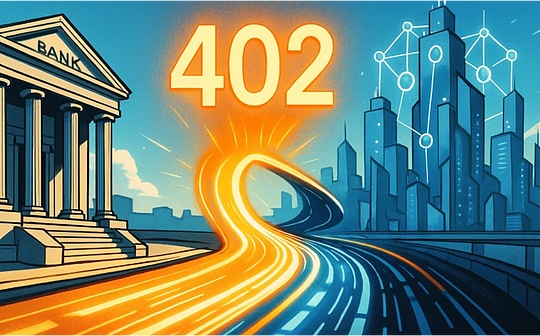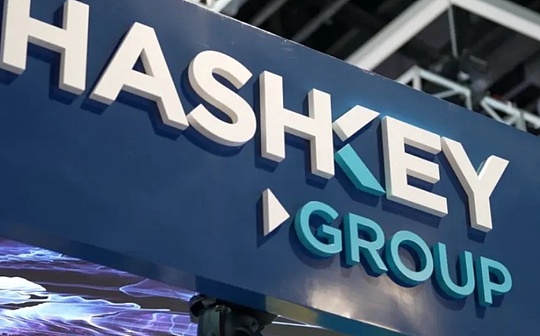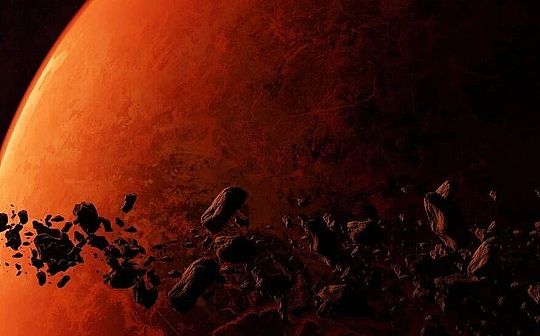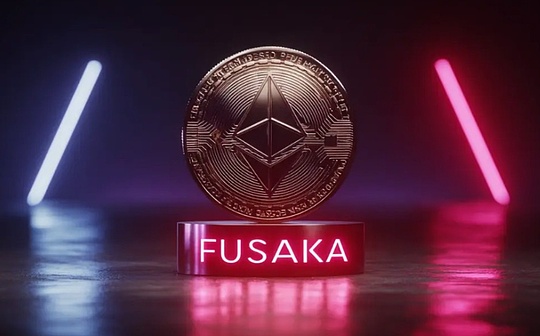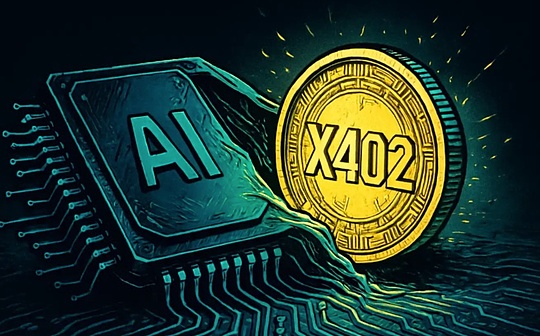
Author: Trustless Labs
BLAST had a $ BLAST token at 10 pm on June 26, which also announced that the end of a huge airdrop feast has arrived.There is no doubt that in terms of investment institutions, community popularity and TVL, BLAST is the only Tianwang -level project that can be compared with ZKSYNC this year.Layer2 has entered the next stage. After the large -scale and controversial airdrop activities, how can the future development of Blast itself and the Layer2 ecosystem develop?
1. Project background
Environmental drive innovation
For a long time, in the conventional Layer 2 ecosystem, users have obtained Layer2 ecological tokens through pledged ecological token, stable currency and other tokens.At the same time, the Layer2 project party uses the pledged token to complete the transaction verification and other behaviors in the POS model. It is also willing to provide tokens to inspire users to participate in the maintenance and development of the network to achieve a win -win situation.Generally speaking, because Layer2 is based on Layer1, funds pledged on Layer2 need to bear two system risks from Layer2 and Layer1, so the Layer2 project often needs to provide interest rates higher than Layer1 pledge as risk compensation. For example, Polygon network as an example.MATIC’s annual interest rate can generally reach 8%-14%, while ETH’s annual interest rate on ETH network is generally 4%-7%.So is there a way to make the capital income obtained by Layer2 to a higher level?So Blast came into being.
>
Figure 1 Blast-logo
Basic information
BLAST is an Optimistic Roll -based Ethereum 2 -layer network launched by BLUR founder Pacman. Blur created by Pacman has distributed the fifth largest airdrop in history.Compared with other Layer2 project starting points for expanding transaction capacity, increasing transaction speed, and reducing GAS costs, Blast focuses on improving Layer1 shortcomings while providing higher economic benefits. Generally speaking, BLAST will provide ETH and stable coins.Layer2, which pledges fixed income, and this narrative based on the perspective of income may lead Layer2 to build a financial attribute to the web3 itself from the technical attribute.
Development process
-
In November 2023, the project was launched: BLAST was founded by Pacman, the founder of the NFT platform Blur. As an expansion solution for Ethereum, the project has obtained a $ 20 million seed round financing led by Paradigm and Standard Crypto.
-
In November 2023, the turning statement: Blast announced its unique income model to return the income of the Ethereum pledge and the RWA protocol to users. The project provides 4%ETH income and 5%stable currency income.
-
In February 2024, the main network launched: Blast officially launched the main network, but before that, users could not extract the funds locked on the platform, which caused some users to dissatisfy.
-
In May 2024, the airdrop plan: The BLAST token airdrop originally planned in May was postponed to June 26, and the amount of airdrop distribution was added to compensate the participants.
-
On June 26, 2024, the release of airdrops: BLAST will conduct airdrops on June 26, 50%of the airdrop rewards are allocated to developers (through BLAST GOLD points), and 50%of them are allocated to early users (including before starting the main network.Receive the user of the fund bridge to the network.
Market growth
The Blast chain has been strongly sought after by the market. It has continued to grow. As of the writing time, its TVL is as high as $ 1.6B, which has become the sixth chain of TVL ranking, and its lock -up assets account for 1.71% of all chain lock assets.Essence
>
Figure 2 BLAST locks asset proportion
>
Figure 3 BLAST indicators change
Second, token economics
Token function
The $ BLAST tokens are similar to other Layer2 tokens in the token function. It has basic functions such as ecological governance, airdrop incentives, and pledge income. So far, it has not been too prominent.However, in terms of ecological governance, BLAST ecology has more complete governance regulations and rules and regulations compared to other Layer2 ecology, which may reflect the relatively complete BLAST ecological construction.
Token distribution
The total supply of BLAST tokens is 10 billion, which is assigned to communities, core contributors, investors and foundations.
-
The community obtained 50%of the airdrops, a total of 50,000,000,000 pieces, and unlocked linearly within 3 years from TGE.
-
The core contributors obtained 25.5%of the airdrops, a total of 25,480,226,842, of which 25%were unlocked 1 year after TGE, and 75%were unlocked linearly in the following 3 years.
-
Investors obtained 16.5%of the airdrops, a total of 16,519,773,158, of which 25%were unlocked 1 year after TGE and 75%were unlocked linearly in the following 3 years.
-
The BLAST Foundation obtained 8%of the airdrops, a total of 8,000,000,000, and unlocked linearly within 4 years from TGE.
>
Figure 4 BLAST airdrop allocation
The first stage airdrop
-
Holding Blast Points points users will divide up 7%of airborne rewards based on the total number of points.
-
Holding BLAST GOAL points users will score a 7%airdrop reward based on the total number of points.
-
The BLUR Foundation will get a 3%airdrop reward for total supply to allocate to the Blur community.
In addition, the airdrops of the top 0.1%of the wallet will be released linearly within 6 months, which is well reduced to the huge throwing pressure when the tokens release.At the same time, the number of Blast Goal is far less than Blast Points, so the benefit of holding Blast Goal is much higher than Blast Points.
>
Figure 5 BLAST in the first quarter of airdrop allocation
Third, narrative characteristics
EVM’s perfect compatibility
EVM compatibility is very important for Layer2 on ETH. The higher the compatibility, the lower the migration cost, and the faster the ecological construction speed. Although the perfect compatibility of EVM is not the original of BLAST, the BLAST chain has adopted the compatibility in compatibilityThe way to choose freely reflects a certain innovation.
Blast’s perfect compatibility with EVM can freely choose the function of “whether auto-rebasing”.Auto-Rebasing is the automatic redirection. In the contract, you can choose whether to participate in this mechanism. For contracts that do not need to choose this mechanism, you can easily complete the migration of DAPP in the case where the code is less modified.
The perfect solution of eating more fish
The slogan of Blast ecology is the only Layer2 that can achieve eth and stable currency native income. How can this be solved?
ETH is not an ERC-20 native currency. Generally speaking, in the blockchain and DEFI, we deposit ETH into the contract. Wallets can obtain the corresponding amount of WETH.Obtaining income in platforms, liquidity pools, etc. In such a process, it often loses high GAS costs, resulting in users with small amounts of funds from being unable to participate in pledge activities.At the same time, ETH pledge needs to be converted into STETH on platforms such as Lido, and it is also facing similar losses.
At this time, Blast proposed the Auto-Rebasing (automatic redo-base) solution. This solution aims to automatically update user account balances without the need to via WETH, STETH or any other ERC20 token.At the same time, the ETH of BLAST’s ETH currently adopts automatic pledge with lido to directly update the native ETH balance, so that users can automatically obtain returns without operating.In addition, the native stable currency USDB provided by BLAST provides by the MakerDao’s T-Bill protocol can be exchanged for DAI when the bridge is connected to Ethereum.
This plan seems to be very complicated. In essence, it is to lock the original tokens that were originally locked inside the contract in DEFI, such as Lido, MakerDao, and continuously converted into native token income.GAS cost.At the same time, the BLAST R & D team has shown that this operation is capable of getting out of Lido and MakerDao in the future. Therefore, the funds pledged in BLAST may not only get the pledge reward of the Blast chain itself, but also have the basic interest rates similar to the ETH chain to achieve the perfection.Eat more fish.
>
Figure 6 BLAST compares with other L2
Fourth, ecological construction
Blast ecological construction covers multiple tracks such as SocialFi, GameFi, DEFI, NFT, etc. Compared with traditional Layer2, BLAST ecology has better narrative and comprehensiveness, integrates a variety of functions and characteristics, forming a diversified ecosystem systemEssence
DEX leading Thruster
Thruster is a preferred Dex created by Degens, which is supported by Blast Points Chads, founders and excellent communities.The TVL has grown rapidly since March, currently as high as $ 438m.In the BLAST airdrop activity, users can obtain Blast Points and Thruster Credits through cross -chain and liquidity to enjoy multiple benefits
>
-
Thruster inherits the AMM model of conventional DEFI, allowing users to provide liquidity earning costs.
-
Thruster provides a web UI with simple and complex mode, which provides convenience for users.
-
Thruster uses the Blast chain automation USDB and ETH pledge income, thereby improving the liquidity and transaction efficiency of DEX itself, providing support for the launch of the new token.
-
Thruster ingeniously designed the annual non -destructive lottery THRuster Treasure pool reward, attracting a lot of active users to participate.
-
>

Figure 8 Thruster -Logo
In addition, Thruster also offers different AMM models, such as Thruster V3 uses concentrated liquidity AMM, with different transaction cost structures, suitable for high -frequency traders.
Leverage borrowing leader Juice Finance
Juice Finance is currently the largest leveraged lending platform on the BLAST chain. It uses innovative cross -insurance certificates DEFI protocols, mainly providing loan and yield farm functions.The refund mechanism is used to optimize the income and points of the user. At present, its TVL is as high as $ 394m.
>
Figure 9 Juice Finance TV Growth
Learn borrowing: Users can lock WETH as a mortgage in the protocol and borrow to more than 3 times USDB. USDB can be deployed in other revenue strategies on the Blast chain to maximize the revenue.
Increase farm: Similar to other income farms, JUICE Finance provides users with a variety of strategic vaults. Users save USDB into earning benefits. It is worth mentioning that ThRuster is also providing strategic vault services.
>
Figure 10 juice finance
Compared with other lending platforms, JUICE Finance also has no loan and cross -margin function, providing users with a basis for the full use of capital advantages to make capital revenue.
Capital effect improvement platform Zest
>
Figure 11 Zest platform
On the conventional mortgage platform, the general mortgage rate reaches 150%, and it cannot be fully used to use token efficiency, and Zest will use the Blast chain to native ETH income.
Improve capital benefits.When users pledge ETH worth $ 150 in ZEST, they can get ZUSD worth $ 100 and Leveraged Eth of $ 50. The yield of ETH is inherited by ZUSD, and the volatility is inherited by Leveraged Eth.Because all ETH's fluctuations are absorbed by Leveraged Eth, ZUSD has risk -free leverage income and improves capital benefits.
Therefore, compared to other platforms, Zest provides a auxiliary solution with higher income and lower risk, which is suitable for cooperating with other DEFI to achieve higher returns.
>
Figure 12 ZEST Early Income
SocialFi faucet
Fantasy is a revolutionary social financial trading card game, combining the elements of social finance and trading card games, providing users with a new interaction and benefit model.
>
Figure 13 Fantasy Market
The Fantasy project was initially launched by Travis Bickle on May 1st by the Blast main network and became one of the 47 winning works of the Big Bang competition.Compared with the traditional SociaFi project, Fantasy defines a new way to associate social media influence with platform currencies and collections, and pointed out a new direction for SocialFi to improve user viscosity.
Essential characteristics: The Fantasy platform provides a card with well -known traders, investors, industry analysts, and project sponsor based on the Crypto Twitter community as the avatar to distribute the card as the medium, which is different from traditional SocialFi.
Characteristics: Players holding cards can pass the Blast chain itself 4%of native income, passively earn 1.5%ETH of its card transaction volume.
The nature of the game: The card composition of the card purchased by the player will be rewarded in the weekly competition according to market transaction activity and social media influence.
As of the time of writing, the total transaction volume of the Fantasy platform NFT is as high as $ 93.11m and the number of participants is as many as 36.7K, which has become the SocialFi, which is 5th in BLAST Chain.
>
Figure 14 fantasy data
Although Fantasy is currently closely related to the card group and platform, how to retain users after the reward is still a big challenge.So far, the actual user base of the web3 is still comparable to the user base of the traditional media platform, and the use of users is much higher than that of traditional platforms.
5. Future development and risk opinions
>
Figure 15 BLAST Publicity Map
Future development trend
Compared with all Layer2 before, BLAST is the first to narrate the economic benefits of Layer2. In essence, it is similar to the first LAYER2 solution to the Layer1 expansion. It has created a new kind of new one.Studying thoughts and roads, it is not possible to deny that Blast is very likely to become the same symbolic project as uniswap.BLAST's future development may be related to the following points.
-
Due to the high yield characteristics of BLAST, in the long run, it is bound to absorb funds from other Layer2 and Ethereum chain itself until it reaches the income characteristics of the BLAST chain and the income characteristics of his chain.
-
The automatic income capacity of Blast chain provides fertile soil for Defi development. The DEFI project built on Blast is naturally more stable than other chain DEFI projects and will have a faster development speed.
Hidden risk analysis
Blast chain relying on the powerful Auto-Rebasing (automatic regulating base) function to realize the automatic acquisition of Layer1 pledge income, avoiding currency losses caused by inflation; this is actually a kind of automated fish, in Layer2, in Layer2Get the benefits of Layer1 and Layer2 at the same time.
-
From a technical perspective, Blast achieved automated pledge through Auto-Rebasing, and reduced the pledged GAS costs, while reducing personal risks of a single user operation and optimizing the overall capital efficiency.
-
From the perspective of risk levels, the benefits of pledge through Lido and Makerdao undoubtedly greatly increased the systemic risk of full -chain funds. At the same time, it was unknown whether the funds could not be recovered in time due to market fluctuations.
-
From the perspective of authority level, BLAST automatically pledged the funds to Lido and MakerDao. The user automatically assumes the corresponding risk and whether it harms the user's right to dispose of funds and it is worth our thinking.
Overall, BLAST's high returns are not given free of charge. It is accompanied by the increase in the risk of overall funding systems. However, for personal small funds, the growth of income is obviously far greater than the increase in risk, and it still has very good prospects.At the same time, BLAST's income characteristics are likely to be adopted by other Layer2, and it is also worthy of attention.

